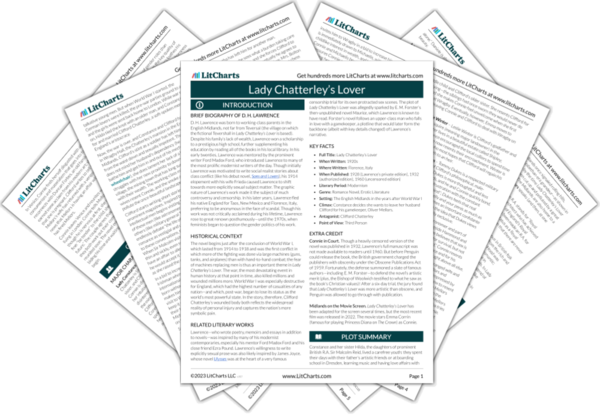The curves of Connie’s body are important: the novel is set at the height of 1920s flapperdom, when thin, androgynous body types were considered stylish, so Connie’s frame marks her as belonging to an earlier time, which embraced different gender norms. This striking closing line hints at how devoid of meaning Connie’s life is: time is passing, but the only thing different in Connie’s life is the position of the clock hands.
